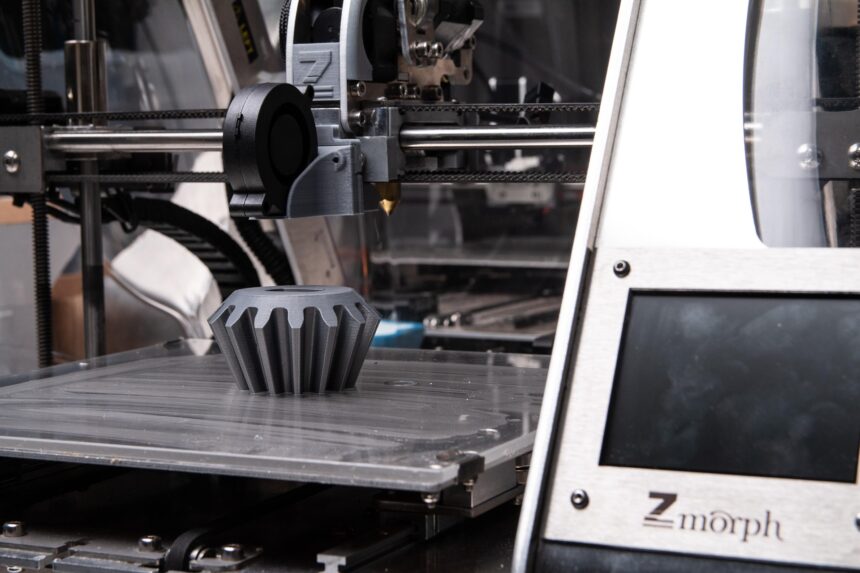What once sounded like science fiction is now on its way to fundamentally transforming industrial manufacturing: laser-based 3D printing. Using high-precision laser technology, not only can three-dimensional objects be produced with unprecedented detail, but entire production processes can be reimagined. In a world increasingly demanding individualization, efficiency, and sustainability, this technology marks a turning point. But what exactly is behind it? And how realistic is it that we’ll soon be printing smartphone cases or even medical implants personalized via laser?
3D Printing Meets Laser Beam: How Does It Actually Work?
Unlike conventional 3D printing methods such as Fused Deposition Modeling (FDM) or Stereolithography (SLA), laser-based 3D printing relies on Selective Laser Sintering (SLS) or the even more precise Selective Laser Melting (SLM).
The Basic Principles:
- A high-energy laser beam hits a thinly applied powder layer (e.g., metal, ceramic, or plastic).
- The laser selectively melts or sinters material particles at the points that match the digital 3D model.
- After each layer, the build platform lowers slightly, a new powder layer is applied, and the process repeats.
- The result is a fully formed component—built layer by layer from light.
This process allows for micrometer-level precision and is especially suited for highly complex, individualized, or geometrically demanding structures.
The Strengths of the Technology: Why Lasers Make the Difference
- Material Variety
From titanium alloys for aerospace to heat-resistant plastics and bioresorbable materials for medicine: laser-assisted 3D printing knows almost no bounds. - Complexity Without Extra Costs
Unlike conventional manufacturing, complexity doesn’t significantly increase effort—the laser scans each layer with the same precision. - Resource Efficiency
Material is only used where it’s needed. There’s minimal waste, and unused powder can be recycled multiple times. - Mass Personalization
Need to change a digital design? No problem. Without tools or molds, every part can be customized—for example, prosthetics or orthopedic aids.
Fields of Application: From Medicine to Aerospace
Medical Technology
Here, the benefit of customization is especially valuable: implants can be tailored precisely to a patient’s anatomy. Laser technology is also gaining traction in the production of dental crowns, hearing aids, and surgical tools.
Automotive & Aerospace
Lightweight construction and maximum durability are essential. Laser-based 3D printing allows the production of topology-optimized components that would be nearly impossible to manufacture conventionally.
Design & Architecture
Complex lattice structures, organic forms, and intricate details can be realized with this technology—for instance, in models or prototypes.
Art & Fashion
The method is increasingly popular in creative industries too: jewelry, haute couture, and interior design pieces benefit from its precision and versatility.
Challenges: Where Light Meets Shadow
Despite its fascinating potential, laser-based 3D printing faces several challenges:
- Cost Factor: Acquiring SLM or SLS machines is expensive. Maintenance and powder production also incur significant costs.
- Knowledge Dependency: Operation and design require specialized expertise in CAD, materials science, and laser physics.
- Build Volume Limitations: Current machines are suited for small to medium-sized objects. Larger parts demand new concepts.
- Post-Processing: Depending on the application, multiple finishing steps may be needed—from depowdering and smoothing to final hardening.
From Prototype to Mass Production: A Revolution in Fast-Forward
Just a few years ago, laser-based 3D printing was almost exclusively used in prototyping. Now, more and more companies are turning to small-batch manufacturing or even full-scale production using this technology. Things get especially interesting when combined with other methods like CNC milling, laser cutting, or surface coating.
A clear trend is emerging: Hybrid manufacturing approaches that combine additive and subtractive processes may shape the future of production.
Light as a Builder: When Personalization Becomes the Norm
What impresses today could be the norm tomorrow. Advances in laser technology, combined with intelligent software and data-driven process monitoring, are paving the way toward a manufacturing landscape where mass production and customization merge. So if you’re wondering what production in the 21st century will look like, consider this: the answer may lie in a beam of light.








![Exploring the Life and Achievements of Austin Metcalf: A Rising Star in [Relevant Field]](https://www.thesixtyone.com/wp-content/uploads/2025/08/image11-36-330x220.jpg)

